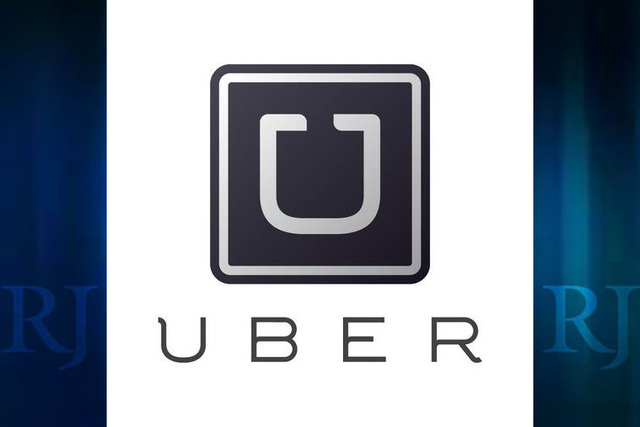Waiting to see what Uber does next

With a local company on the verge of releasing details of a smartphone application that would enable people to hail a ride with a touch of a button, it will be interesting to see what will be the next move of Uber, the ride-sharing company that hopes to establish a foothold in Southern Nevada.
Maybe the bigger question is: Does Uber have any moves to make?
The San Francisco-based company has made a splash worldwide with its efforts to use technology to connect people with cars to people without them.
Consumers have praised the innovation of Uber and similar ride-sharing companies such as Lyft and Sidecar. Warrior friends who have used the service in other cities say it’s a slick way to get around.
Representatives of the company say they want to develop a presence in Southern Nevada, and because the brand is known so well in other cities, it’s likely it would be a success here.
But Uber just can’t seem to turn the corner here. Many attribute that to a strong taxi and limousine industry in Southern Nevada that knows all the tricks to blocking competition.
But there’s more to it than that. Under existing transportation regulations, Uber would have a difficult time being as successful as it is in other cities.
A local transportation company executive told me he had made contact with Uber about partnering in Southern Nevada. But when he explained the state’s regulatory landscape, it was clear that Uber wouldn’t be able to make the kind of money it has made elsewhere.
The reason is that Uber’s bread-and-butter product, the low-cost UberX, would use a car driven like a taxi. In Southern Nevada, taxis base their pricing on meters that are calibrated and inspected by the Nevada Taxicab Authority.
No problem, you say, just let Uber be licensed and regulated by the Taxicab Authority.
That’s a daunting prospect on two counts: The company would have to prove to board members that its presence would not detrimentally impact existing cab companies and their drivers, and it would have to abandon its “surge-pricing” strategy of charging more during high-demand periods.
Cab companies have gone out of their way to blast Uber at every opportunity. Some companies have threatened their employees by warning them of their economic demise if they defect to Uber.
Cab company representatives say Uber doesn’t insure its drivers and Nevada insurance regulators issued a warning that ride-sharing companies might be uninsured or underinsured, accusations Uber denies.
The Road Warrior email box fills with comments whenever Uber is involved in a crisis, such as the recent incident in which an Uber driver was accused of sexually assaulting a passenger in Washington, D.C.
Uber’s defenders point out that a taxi driver could just as easily assault a customer. The Taxicab Authority, in fact, just last month heard an appeal on a permit revocation from a driver accused of hitting a female passenger. He lost the appeal.
Uber could compete more easily against limousine companies with its UberBlack or UberLux services. Those services would be monitored by the Nevada Transportation Authority — the same regulatory group that’s been examining Ride Genie, the app that will be rolled out later this month by Las Vegas-based Integrity Vehicle Solutions.
The company is contracting with some local limousine companies to offer service through the app.
Ride Genie is not classic ride-sharing like Uber and its competitors, but the app will work similarly to theirs. Ride Genie rides will be provided by certificated carriers and not private contractors.
Like the Uber app, Ride Genie would require users to preregister credit card numbers. When customers order rides, they can monitor their cars’ progress to the arrival point.
Once a ride is completed, the cost is charged to the preregistered credit card.
With Ride Genie in the market, how will Uber react?
It could try to enter the market under either the Taxicab Authority or the Transportation Authority, a route that seems doomed to failure.
It could fold the tent and consider the Las Vegas market a lost cause, a move that would thrill the local cab and limo industry but do a disservice to the riding public seeking an inexpensive transportation alternative that seems to work in other markets.
It could barnstorm the market with an army of Uber drivers and dare regulators to catch them if they can. Illegal operators crawl into Las Vegas all the time, and it’s well documented that transportation regulators are seriously undermanned with law enforcement personnel.
But when regulators catch an illegal operator, the driver is on the hook for discipline and the vehicle can be impounded. The customer also could be stranded. It seems no one wins.
Another strategy: Uber could attempt to have transportation laws and regulations changed. Would out-of-state ride-sharing companies have enough pull with state legislators to carve a niche for themselves?
That turned out to be the Uber solution in Colorado, where a new ride-sharing option was created by law.
It’s an arduous process that might be Uber’s best hope if it wants to become a part of the Southern Nevada transportation scene. But it would be an uphill fight that could take months.
Questions and comments should be sent to roadwarrior@reviewjournal.com. Please include your phone number. Follow @RJroadwarrior on Twitter.